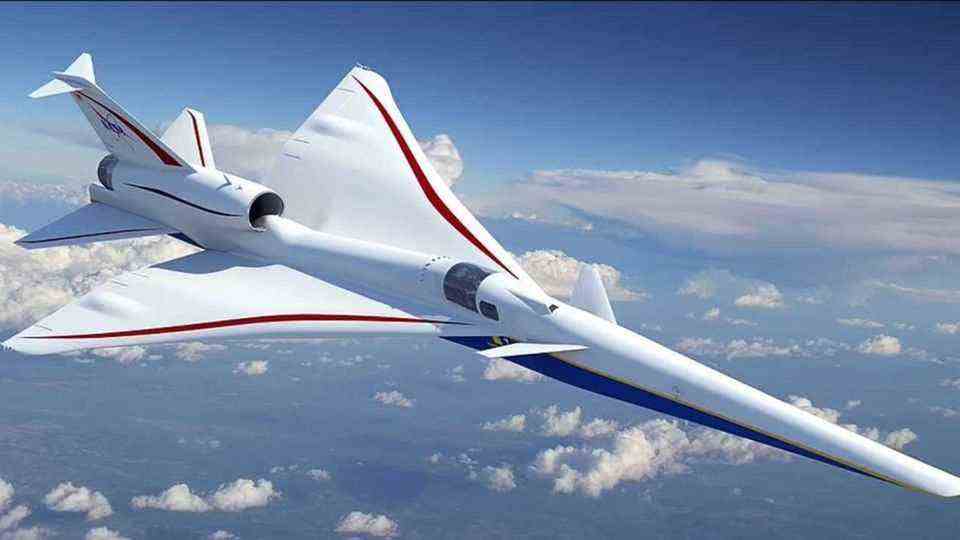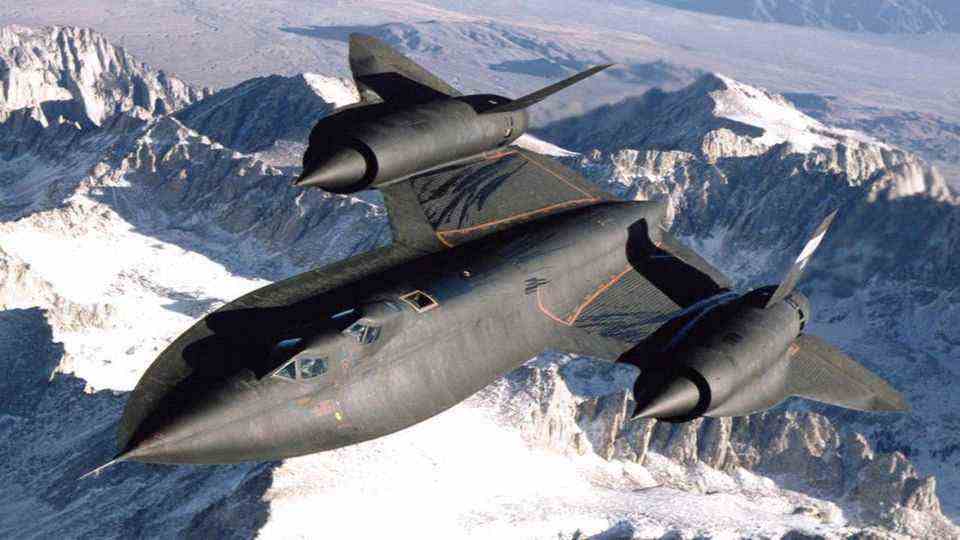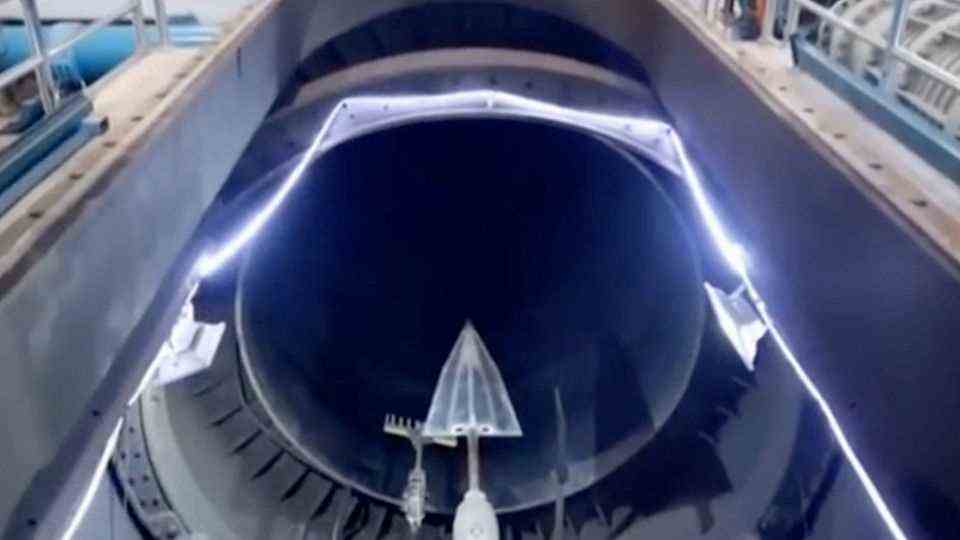Whisper Jet
Three hours after New York – test of the supersonic jet Son of Concorde was successful
The long nose and the overhead engine serve to reduce the bang.
© NASA / PR
When the Concorde broke the sound barrier, the windows on the ground shook. The Son of Concorde should only make two “pops”. A test in the wind tunnel was successful, and the first machine should take off in the course of the year.
Although air travel is generally criticized for its CO2 emissions, several companies are working to develop passenger planes that fly at supersonic speeds. That would massively reduce flight times, and it would also be an answer to the challenges of modern rail transport. Beijing is already building a network of maglev trains. With speeds of over 600 kilometers per hour, these journeys would be faster than today’s air travel because the train stations are more centrally located and boarding is much faster.
Too loud to be legal
However, the greatest difficulty of civilian supersonic flight is not the engines, but the massive bang that occurs when an object breaks the sound barrier. Nasa engineers are working on the Commercial Supersonic Technology (CST) project – nicknamed “Son of Concorde”. They want to turn that bang that shakes window panes miles away into a soft pop. NASA has now completed initial noise reduction tests in a wind tunnel, according to NASA’s Glenn Research Center.
The sonic boom occurs when the shock waves generated when breaking the sound barrier at a speed of 1235 km/h meet and overlap. The bang is about 110 decibels and can be heard 48 kilometers away. The problem has already added to the old Concorde. No one can be expected to do that over inhabited areas, which is why the Concorde was a failure from the start. She stayed in the air solely for reasons of prestige, and operated on a select transatlantic route, so the noise could only be heard on the open sea.
New shape prevents waves from building up
Even the “Son of Concorde” cannot override the laws of physics. But today, computers can calculate the shape of the plane in such a way that the waves do not reinforce each other, but rather neutralize each other. The aim is for the sonic boom to be no louder than a lawnmower. A small model of the planned X-59 was tested in the wind tunnel for 14 days. The X-59’s engine is intentionally designed to sit in the upper part of the vehicle to produce a quieter “bang”, the X-59’s ten meter long nose was designed to minimize shock waves.
Ed Haering, an aerospace engineer at NASA’s Armstrong Flight Research Center, said, “With the X-59, we’re still going to produce multiple shock waves because of the plane’s wings and the volume of the fuselage.” But the shape of the plane was designed to prevent these shock waves from connecting and escalating. “Instead of the loud boom-boom, we create two soft throbbing sounds.”
“With the X-59, we want to show that we can reduce those annoying sonic booms to something much quieter,” said John Wolter, lead researcher on the test. “The goal is to provide authorities with data on noise and people’s response to it, which could lead to new rules for supersonic flights over land.”
expensive pleasure
The first tests of the jet in the sky should begin at the end of the year. Nasa and Lockheed Martin are currently building a prototype. The data from the wind tunnel should also be used to convince communities to cooperate with the test. On the ground it should be observed how loud “Son of Concorde” is in practice. NASA is hoping for a sound no louder than a car door slamming. The jet is to reach speeds of 1700 km/h and cover the London – New York route in just three hours.
NASA paid 247.5 million dollars to build the test aircraft and promises nothing less than a revolution in air traffic. “This aircraft has the potential to transform aviation in the United States and around the world by enabling everyone to fly faster over land,” said NASA CEO Jim Bridenstine at the presentation of the project.
However, the trips are not intended for everyone. With a length of 29.5 meters and a width of 9 meters, the jet was designed for a few illustrious passengers.





